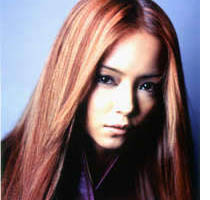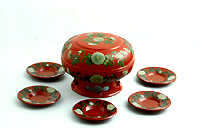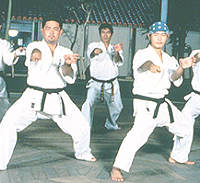Kyushu-Okinawa Summit 2000
Outline of Kyushu-Okinawa Summit Meeting

![]()
![]()
 Namie Amuro popular Okinawan singer |
Okinawa is known as the 'Island of song and dance' and is a well-known treasure house of the performing arts. The dazzling Ryukyu Dance and Kumi Odori Dance, an Okinawan drama designated an Intangible Cultural Asset alongside Noh and Kabuki; the Sanshin three-stringed lute and Kokyu, both musical instruments originally from China, which are indispensable to Okinawan song and dance - these are just a small sampling of the rich cultural heritage of the Ryukyu Kingdom that lives on to this date. This cultural background has given rise to today's young Okinawan musicians who are enjoying their popularity throughout Japan. |
![]()
 Okinawan Lacquer Ware |
Many traditional crafts can be found on Okinawa, each possessing its own unique characteristic. Okinawa played a role as a bridge linking Asia. Foreign trade with India, Southeast Asia, China and Korea from the 14th through 16th centuries brought cultural influences from abroad to Okinawa, which took root and blossomed on the island. Later, there were even special public servants in charge of dyed fabric, pottery and lacquer ware. Such refined crafts of Okinawa gave great influence to all of Japan. |
![]()
 Okinawan Karate |
Okinawan Karate has become globally famous through movies such as "The Karate Kid." Karate, which means 'empty hand,' is an art of self-defense that originally developed on Okinawa. During its development phase, it was heavily influenced by Chinese Kung Fu. The 15th century abolition of war and warriors during the reign of King Sho Shin, and the abolition of weapons imposed by the Satsuma clan after 1609 left no choice for Okinawans but to use their bare hands when protecting themselves from an armed enemy. This background and the influx of Kung Fu along with the many other Chinese influences of the 14th century, fused to bring about the development of Karate as a highly secretive and refined martial art. |
 |
 |
Back to Index
